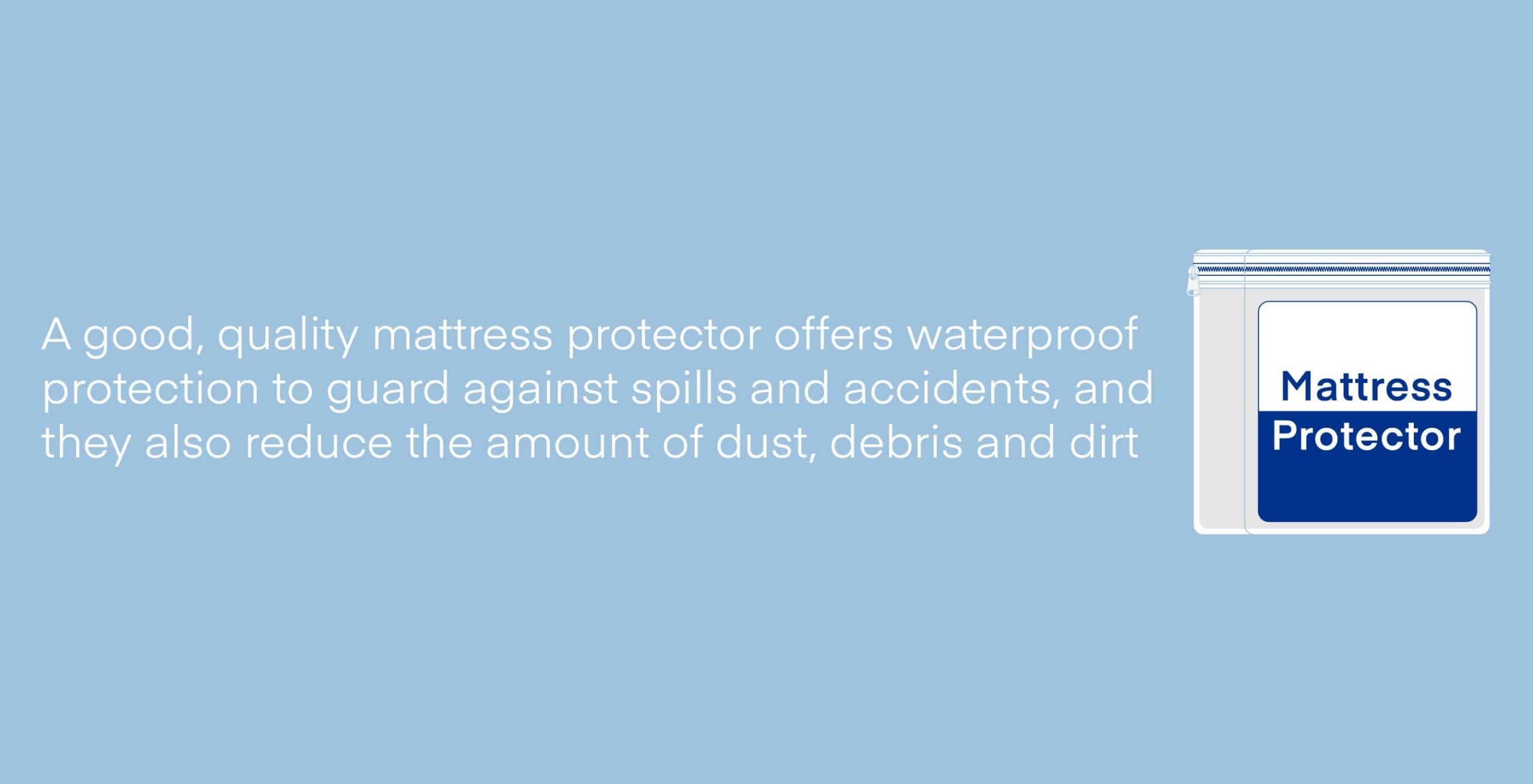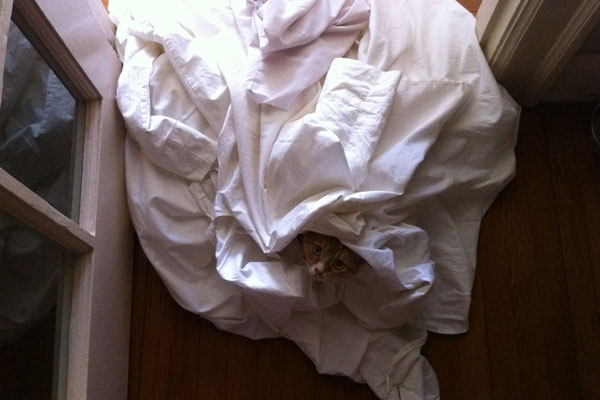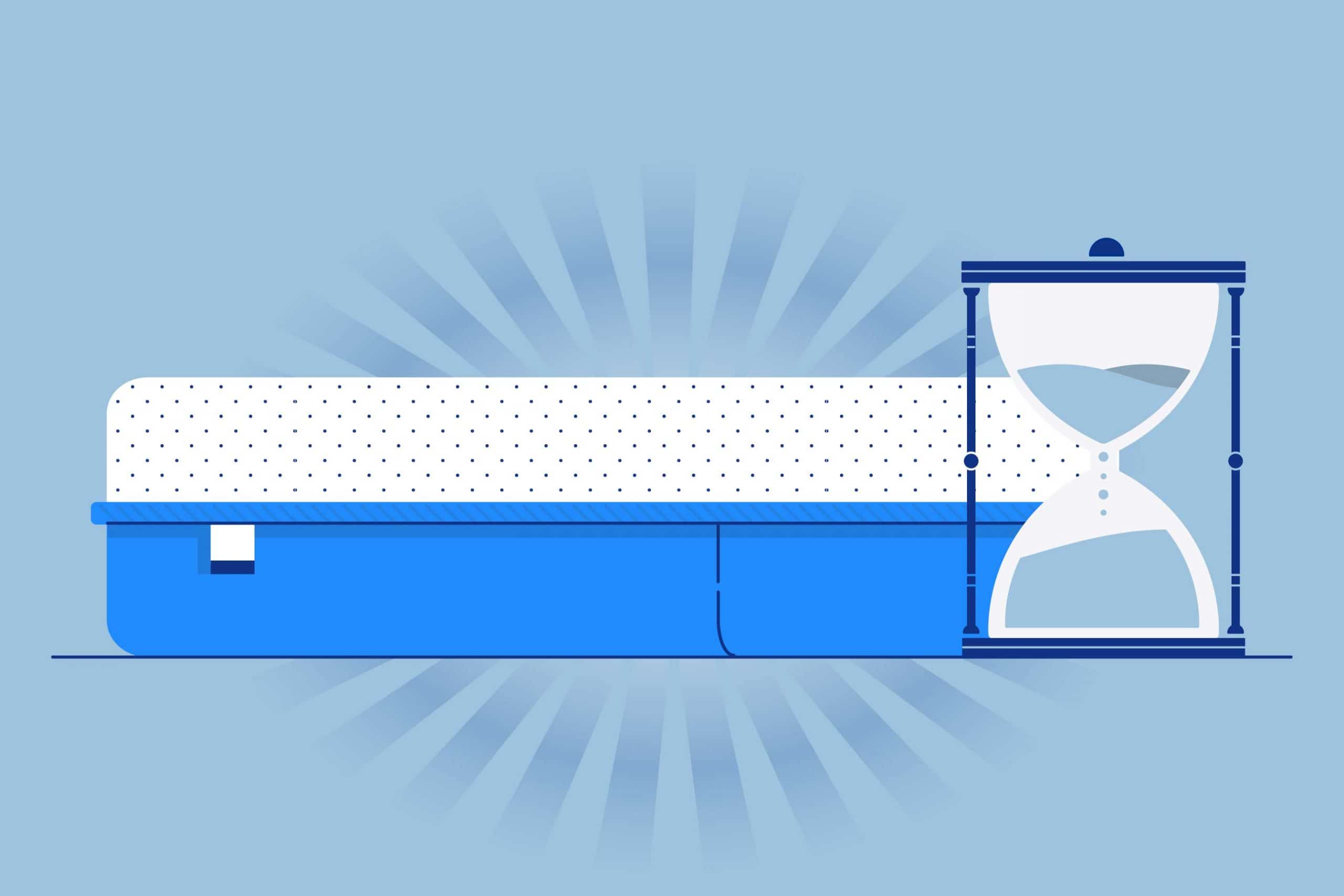Key Takeaways
- Bed Support Deters Mattress Sagging and Loss of Support: Proper support is crucial for your mattress to maintain its integrity and longevity. Ensure you have the right type of support for your specific mattress, and periodically check for any damage to the support system. Rotate your mattress every two to six months to ensure even wear and prevent depressions and softening.
- Rely on the Barrier of a Mattress Protector: Use a high-quality mattress protector from the beginning to safeguard your mattress against spills, accidents, and the accumulation of dust, debris, and allergens. It also makes cleaning up easier.
- Clean Bedding Promotes a Clean Mattress: Regularly wash your bed linens, including sheets and blankets, to prevent sweat, oils, and allergens from infiltrating your mattress. Even with a protector, clean linens help maintain a healthy sleep environment.
From cleaning to prevention, a little care and maintenance can go a long way in keeping your mattress in good shape for years to come.
Once you’ve invested in the best mattress, chances are you expect it to provide comfortable sleep on it for many years. The average mattress is designed to last anywhere from five to ten years or more, though how it is maintained can shorten or lengthen your bed’s lifespan.
Being aware of environmental factors and knowing the best ways to care for a bed can help you keep your mattress clean, healthy and providing comfortable sleep as long as possible.
How to Keep Your Mattress in Good Shape Longer
We’ve put together ten of the best ways to protect your investment by caring for the mattress and preventing disasters before they occur.
1. Make sure your mattress is properly supported.
While you may not always need to purchase the matching box spring or foundation with a new mattress, it is essential to make sure your mattress does have the right kind of support. This helps preserve the integrity of materials and prevent early wear.
Check with the manufacturer or look at the warranty policy for recommendations. Box springs are generally used only with spring mattresses, while memory foam mattresses and other specialty mattresses usually require firm, solid support.
Beds that use a frame should be designed to support the weight of sleepers and the mattress, and queen and king beds should have center support bars. Platform beds with wide slats may need extra support depending on mattress type and weight.
It’s a smart idea to check on your bed’s support every year or so to make sure there are no broken slats or springs that could affect your mattress.
2. Use a mattress protector from the beginning.

We’ve covered the benefits of mattress protectors before, and they are one of the best and simplest ways to protect your bed’s longevity.
A good, quality mattress protector offers waterproof protection to guard against spills and accidents, and they also reduce the amount of dust, debris and dirt that make it into your bed.
This helps protect the materials inside your bed from damage, keeps skin oils and sweat off the bed and reduces build up of allergens like mold and dust mites. A protector also makes cleanups a snap when accidents do happen, and many newer types feel just as comfortable as a fitted sheet.
3. Wash bed linens regularly.

When you sleep, you shed sweat, oils, hair and skin cells. Eating in bed also leaves behind crumbs, and pets can track in all sorts of things. In addition to getting yucky, all of this can get into mattress layers, breeding bacteria and encouraging dust mites.
Bed sheets and blankets should ideally be washed every week to every two weeks according to most cleaning experts. Even when using a mattress protector, it’s still important to keep linens clean. The mattress protector should also be washed occasionally according to a manufacturer’s directions.
4. Get pets separate beds to snuggle in.
Speaking of stuff in your sheets, it is better to give pets their own designated beds rather than letting them cuddle up on your mattress.
Even well groomed pets walk outside, drool and shed hair and cells just like people, and all that winds up in your bed. Pets also can have the occasional accident, which can all but ruin an otherwise good mattress.
5. Rotate the mattress regularly.
Every type of mattress benefits from being rotated regularly, no matter the material or the size. Some manufacturers say it is not necessary, but rotating helps promote more even wear, while not rotating makes depressions and softening more likely.
Every two to six months rotate the mattress 180 degrees from head to foot. This is particularly important the first couple of years as you are breaking in the mattress.
6. No jumping on the bed!
Your mother always told you not to jump on the bed, and she wasn’t wrong. Spring, water and air beds may be most prone to damage with rough wear, but foundations, frames and even foams can all wear down more quickly if you are hard on the mattress.
7. Take care when moving your mattress.
When you move, protect your mattress from damage by encasing it in plastic and avoiding bending or folding. Moving and box stores often carry heavy-duty mattress bags that can be secured with tape to keep dirt and water off the bed, and these also prevent scuffs and scratches.
Generally when moving a mattress, it’s also best to keep them upright on their sides so they don’t crease or sag in transit. For covers with handles, manufacturers typically suggest not using them to move or drag the mattress.
8. Don’t bring home unwanted hitchhikers.
Bedbugs are one of the fastest ways to ruin a mattress, as they can be difficult to get rid of once they infiltrate.
When sleeping away from home, always inspect the bed from signs of bed bugs and try to keep luggage off the floor. If you suspect bedbugs, Texas A&M University has a few tips for preventing bringing them back home.
In apartments or areas of the country where these critters are common, consider using a bedbug-proof mattress encasement. These differ from mattress protectors as they have impenetrable zippers and cover the bed on all sides to prevent bugs from making their home in your mattress.
9. Let the light in occasionally.

Every month or two when you have a sunny and dry day, strip your mattress and let the morning sunlight in to air out the bed for several hours (though if bedbugs are possible, leave the cover on).
This helps prevent excess moisture both from sleepers and humidity, and may also help keep dust mite populations in check according to Kingston University study.
10. Follow manufacturer cleaning directions.
Every type of mattress should be cleaned regularly to keep your sleep environment clean and keep your mattress healthy.
Many manufacturers will include directions for stain removal and general cleaning, but most beds should be vacuumed with a hose attachment to remove surface dust.
Stains can be spot treated with a mild water and soap solution, but allow them to completely dry before making the bed. Avoid using harsh chemical cleaners on foams as they can break down foam integrity.
Depending on dust levels, allergies, or personal preference, vacuuming should be done every 1 to 3 months and stains spot-treated as necessary.
Although different types and brands of mattresses can differ somewhat in care and maintenance, the basics are the same. Essentially, keep the bed clean, protect it from accidents and damage, ensure it’s supported, and rotate for even wear.
Mattress lifespan depends on many factors, but following these best practices can help ensure that you enjoy years of healthy sleep and that your investment lasts as long as possible. Whether you are looking at more traditional brick-and-mortar stores, or a new bed in a box mattress companies, know that a 10-year warranty on your mattress is considered an industry standard.
Do you have any great mattress care tips to share? Has your mattress kept in great condition since you purchased it?
About the author
Rosie Osmun, a Certified Sleep Science Coach, brings a wealth of knowledge and expertise to the health and wellness industry. With a degree in Political Science and Government from Arizona State University College of Liberal Arts and Sciences, Rosie's academic achievements provide a solid foundation for her work in sleep and wellness. With over 13 years of experience in the beauty, health, sleep, and wellness industries, Rosie has developed a comprehensive understanding of the science of sleep and its influence on overall health and wellbeing. Her commitment to enhancing sleep quality is reflected in her practical, evidence-based advice and tips. As a regular contributor to the Amerisleep blog, Rosie specializes in reducing back pain while sleeping, optimizing dinners for better sleep, and improving productivity in the mornings. Her articles showcase her fascination with the science of sleep and her dedication to researching and writing about beds. Rosie's contributions to a variety of publications, including Forbes, Bustle, and Healthline, as well as her regular contributions to the Amerisleep blog, underscore her authority in her field. These platforms, recognizing her expertise, rely on her to provide accurate and pertinent information to their readers. Additionally, Rosie's work has been featured in reputable publications like Byrdie, Lifehacker, Men's Journal, EatingWell, and Medical Daily, further solidifying her expertise in the field.
View all posts




